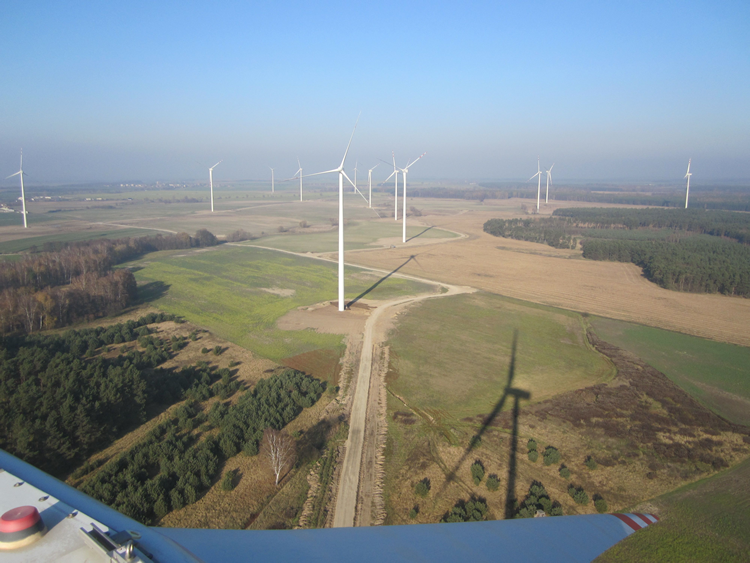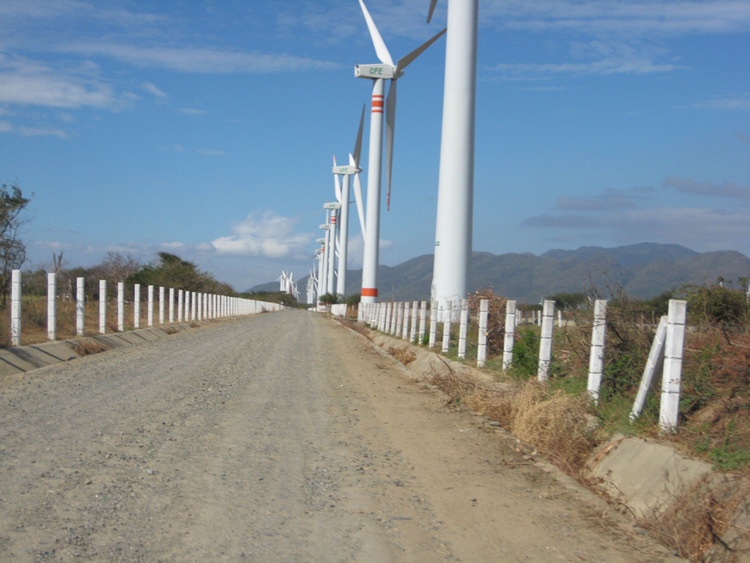
By Tencate – The market for sustainable energy is growing. Players include both locally and internationally operating companies that are active in biogas installations, solar panels and wind energy (turbine builders). For example, since 1995 the number of wind turbine farms has snowballed, and over the coming years the International Energy Agency (IEA) expects “an enormous increase.” Geosynthetics can fulfil an important supporting function when it comes to the installation of wind turbine farms.
Renewable energy is extracted from organic material (biomass), vegetable oil and manure. Sustainable energy is the kind of energy that is limitlessly available to humankind, such as the sun, wind and geothermal energy. Generating and using it has no negative impact on the environment.
Windmill farms are often constructed in former agricultural areas and outlying districts, where a sound infrastructure or hard-surface access roads are lacking. The ground usually has poor carrying capacity and is sometimes downright swampy. In the words of Dick Janse (product manager and wind farm business specialist TenCate Geosynthetics EMEA), these are ‘dramatic landscapes’.
Access Roads for Sustainable Energy

According to Dick Janse, the boost in investments in sustainable sources of energy and the deplorable terrain on which people want to build installations constitute an excellent opportunity for the textiles of TenCate – especially the European TenCate Geolon® and the North American equivalent TenCate Mirafi®. These are high-modulus fabrics for the foundations of (temporary) access/feeder roads burdened with heavy traffic.
Unlike traditional materials, these textiles are flexible, have low stretch and high tensile strength. When using such strong geotextiles, the road builder needs less surface material, which furthermore can be obtained locally. This decreases the CO2 footprint and delivers cost savings. The separation function of the fabric ensures that the load-bearing capacity remains guaranteed for a longer period. Besides, temporary is a relative concept: in any event the roads last for 25 years. They have to deal with the greatest loads by far during the first three months. After all, materials, equipment, heavy turbines and turbine blades up to 55 metres long have to be transported and erected.
Global Network
Dick Janse and Mark Kurtz, his counterpart at TenCate Geosynthetics in the United States of America, are building a global marketing and sales network with a team of specialists in the US and Europe. Sustainable energy is certainly a global business, and the TenCate specialists are therefore involved in projects in various countries – from Europe to North and South America. The specifications are usually similar. Ultimately it’s a matter of turning up on the doorstep of the right person (the energy company or indeed the turbine builder) with a profitable solution. Who secures the contract comes down to allocation, quality, and economic and technological reliability – but not at any price. ‘We’re dealing with investment-sensitive projects. You can’t allow yourself to make a single mistake.’
TenCate Geosynthetics is already supplying textiles for this application to Germany. This country leads the way in the wind energy sector. Our eastern neighbours are followed by the United Kingdom, Spain, Italy and France. The projects are nearly all on-shore wind farms. Business relations are now being forged with some of the major turbine builders, such as the Spanish companies Vestas, Gamesa and Acciona.
Potential
Numerous roads in inhospitable areas of the US have already been laid with several qualities of TenCate Mirafi®. The product portfolio is being further expanded and the cost structure is being improved, which will enable TenCate Geosynthetics to respond even more effectively to the growing demand. ‘There is considerable potential,’ says Dick Janse. He points to the figures of the International Energy Agency. ‘As far as politics is concerned, it’s a green issue on this side of the ocean too. In Scotland no park is built or road laid unless the product is recoverable. After all, within the EU environmental permits must be issued. You can’t just excavate and disturb the subsoil, so you lay the textiles on the existing subsoil and cover this with natural material. Our geosynthetics are recyclable. When the end-of-service-life moment arrives, you can simply clear up the textiles and recycle them. This is just as sustainable as the type of energy itself.’
Portions of this article were published originally in the Spring 2013 issue of txtures by Royal Ten Cate, www.tencate.com.











